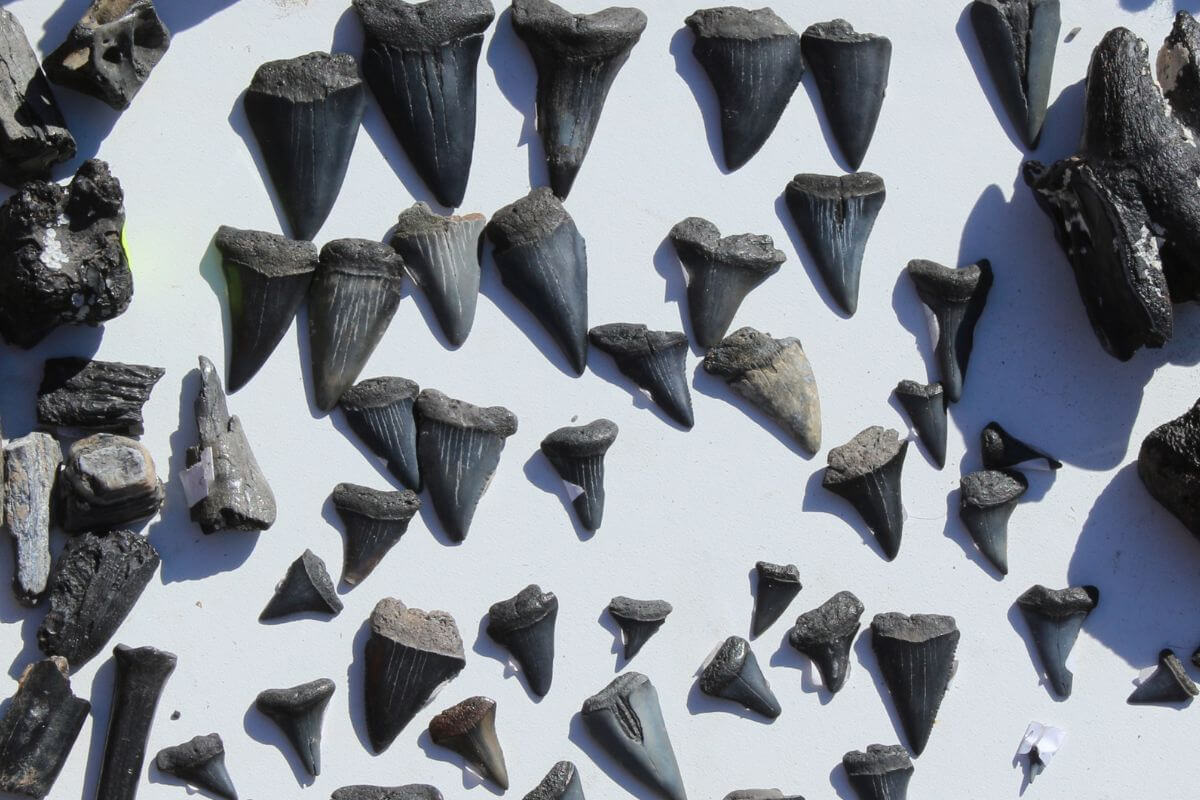Last Updated on January 1, 2024
Enjoy the thrill of discovering shark teeth on Florida’s Gulf Coast Venice Beach, known as the “Shark Tooth Capital of the World,” where millions of years ago, the area was teeming with sharks.
(NOTE: This article was recently updated to include tips on finding shark teeth in Florida and specific places to find shark teeth in Florida.)
Finding Florida Shark Teeth at the “Shark Tooth Capital of the World”
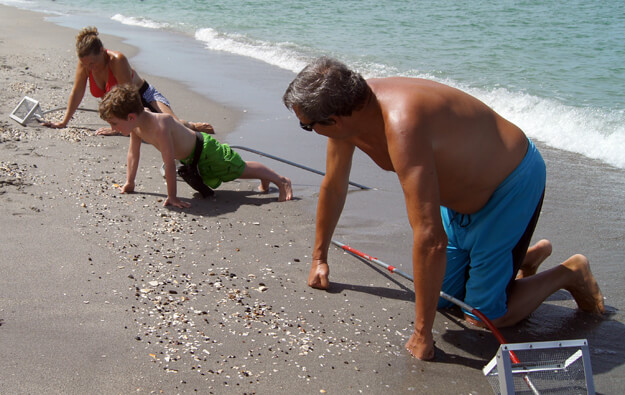
It’s a picture-perfect morning on Southwest Florida’s Venice beach, as the cloudless royal blue sky meets the far-off horizon. The emerald-green Gulf of Mexico gently laps onto the sandy shoreline, and a few barefooted beachcombers are off in the distance.
A young boy, along with his mother and father, is stooped over searching for something on the beach. They appear to be looking for something amongst the shells and sand.
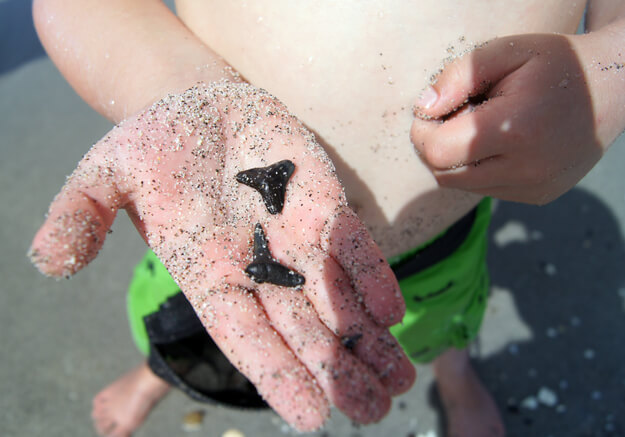
The little boy is holding a long-handled tool that resembles a snow shovel with a wire mesh basket attached to the end. With his dad’s help, the boy heartily scoops sand and shells from the water’s edge letting the water and sand drain from the sieved basket.
The boy inspects the catch, sifting through the shells. He shrieks, “I found one!” as he proudly bounces up and down, holding within the palm of his tiny hand – a small black shark’s tooth.
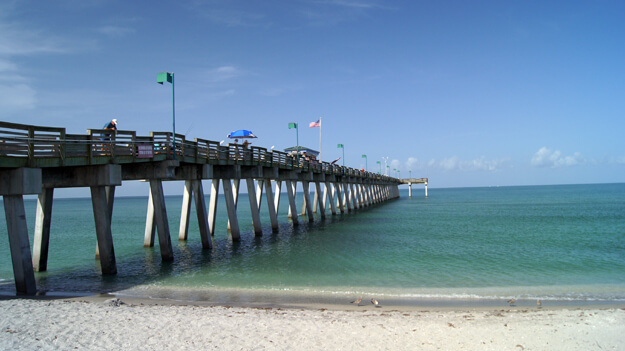
This scene plays out daily on Florida’s Venice beach, the “Shark Tooth Capital of the World” located in Sarasota County.
History of Florida Shark Teeth

The Gulf beaches in and around Venice, hold a bountiful cache of fossilized sharks’ teeth. Ten million years ago, the area was teeming with sharks.
Over time, as the water receded and gave way to land, the prehistoric sharks died. Their skeletons disintegrated, and their fossilized teeth remained.
The Venice coastal area just south of Sarasota sits on top of a fossil layer that runs 18-35 feet deep. With storms and waves, the fossils are slowly driven into the shallow waters and on the beach.

Back on the beach, Kitty Sala, an Authentic Floridian from New York who moved to the area, is wading waist-deep in the water, inspecting her newly scooped catch. Already a veteran shark’s teeth hunter, Kitty spends most of her week strolling along the beach hunting for fossilized treasures.
Kitty is bubbly and eager to share some tips about her new hobby. “Shark’s teeth come in differing sizes, colors, and shapes,” she beams. “Some are black, others gray or brown. Early mornings are best. Weekdays are ideal because there are fewer people.”
She continues, “The best time to collect teeth is often after a storm. In fact, it’s different with every storm because it can bring a lot of teeth or it may carry them further out. You never know.”

Kitty keeps her stash of fossils in a little pill bottle she carries. “I have found over 10,000 teeth,” she proudly exclaims.
How to Find Shark Teeth
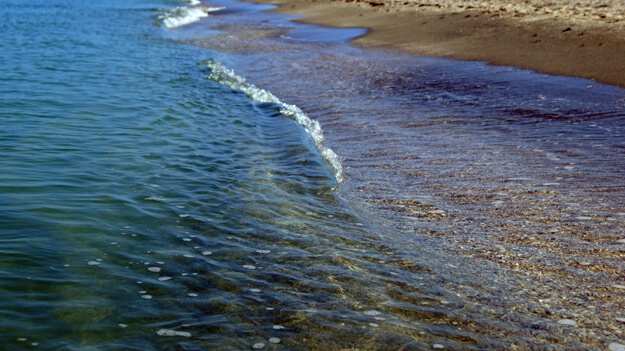
- Walk the shoreline. – If you want to look for shark teeth without going deep into the water, you can start by walking along the waterline of the shore. Typically the tides will bring in large piles of shells. Spend some time with a small sifter looking through these shells. You might find shark teeth within these piles of shells.
- Dig a few feet off of the shoreline. – Another great way to find shark teeth in Florida is to bring a small shovel and sifter into the water with you. Go a few feet out from the shoreline. Dig up a scoop of sand and sift through it to look for teeth while you are sifting.
- Dive further out from the shore. – If you are into snorkeling or scuba diving, spend some time further out looking for shark teeth in the sand in deeper water. There are floating sifters you can bring with you to sift through sand and find shark teeth farther from the shore.
- Use the right tools. – Some use a shovel, a kitchen strainer, or scoop the sand and shells with their hands. Once scooped, they bring it back to the beach and pour it onto the sand. Then they sit on the beach and sift through, looking for their prizes. Other fossil parts, bits of coral, or small pebbles may catch the eye, but at least one or more teeth will likely be found in most large scoops.
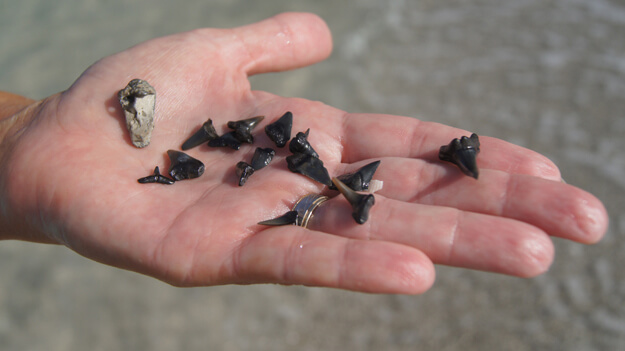
Most sharks’ teeth are from 1/8” to ¾” or even a bit larger. The really large sharks’ teeth are usually out farther out and may require dive equipment to locate.
Local Venice dive boats will take you out as they cruise a few miles from the shore. In fact, several boat captains charter trips along the Venice coastline in search of prehistoric fossils and sharks’ teeth.
Call any local Venice Dive Shop, and they will recommend captains specializing in fossils.
Places to Look for Shark Teeth

Are you looking for other places to look for shark teeth in Florida? Check out a few of these locations:
- Venice Beach
- Casey Key
- Manasota Key – Englewood beach
- Boca Raton
- Palm Beach Island Beaches
- St Augustine Beach
- Mikler’s Landing Beach Ponte Vedra
- Jacksonville Beaches
- Amelia Island
- Singer Island
- Jupiter Island
The Venice Pier

The Venice Pier is right in the heart of shark’s tooth country. It’s an ideal place to begin your journey, especially if you are new to the area.
Before you search the sands, take a walk out on the scenic 740-foot pier and stop at Papa’s Bait Shop. There you can rent or buy the “Venice Snow Shovel,” the screened basket fitted onto a handle to help you dig shark’s teeth.
After a day of fossil hunting, you might want to celebrate your bounty at Sharkey’s on the Pier or the fancier Fins restaurant. Both places have a spectacular Gulf view. You can enjoy a well-deserved and delicious fish sandwich or a beverage to toast the sunset.
Get a Book or a Guide
With a handy guide found at local bookstores, (Hunting Fossil Shark Teeth In Venice Florida by Robert Fuqua), pictures will assist you with shark species teeth identification.
There are sand, lemon, mako, bull, whitetip, and megalodons just to name the common ones. Some are pointier or fatter, or even sharper at the ends. You’ll have fun just looking at the variety.
Before you know it, you’ll have quite a collection of shark teeth.
Shark Tooth Guides
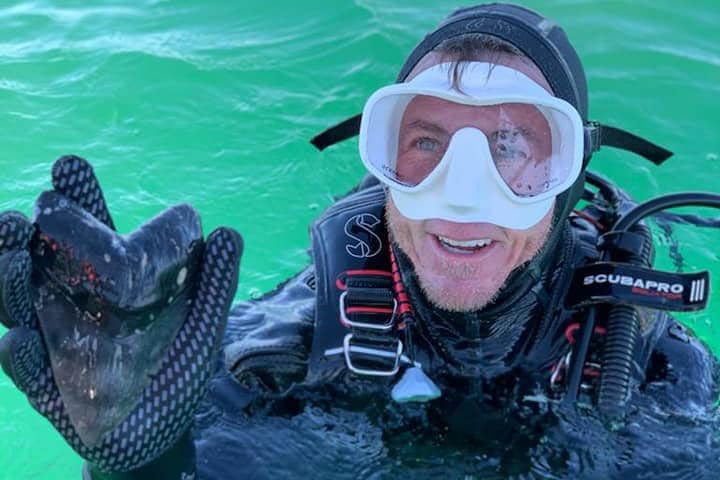
- Black Gold Fossil Charters – 301 E Venice Ave, Venice, FL 34285
- Sarasota Suncoast Tours – 1727 Fruitville Road, Sarasota, FL 34236
- Island Boat Adventures – 2902 Miriam St. S, Gulfport, FL 33711
- Mudslinger Tours – 1414 NW 43rd Ave, Gainesville, FL 32605
- Paddle Jax – Fernandina Beach, Amelia Island, Florida
Things you will Need to Find Florida Shark Teeth

- Hat
- Sunscreen
- Small baggie or container for your shark’s teeth.
- (Optional) Kitchen sifter, or the Venice “snow” shovel, basket (buy at the pier or Ace Hardware)
Shark Tooth Facts
- Sharks produce 20,000-25,000 teeth over their lifetime
- Shark’s teeth sizes can range from 1/8” – 3.5” or more
- The mighty Megladon shark tooth fact: 1” of the tooth represents 10 feet of the actual length of the prehistoric shark
More Florida Locations for Finding Shark Teeth in Florida:

(Recommended by Authentic Florida Readers)
Many Florida rivers contain a treasure trove of fossils and shark teeth. The Peace River (which flows into Charlotte Harbor) and the Alafia River are very popular with collectors. In fact, abandoned Florida phosphate pits are known to be excellent sources for finding these prehistoric treasures.
Other locations are Egmont Key (St. Petersburg area) and Juno Beach on the east coast. In north Florida, try Jacksonville Beach, Vilano Beach, Little Talbot Island, and Fernandina Beach.
NOTE: This Authentic Florida article was originally published with Visit Sarasota
Here are a few more articles you may find interesting:

